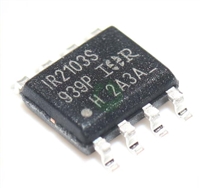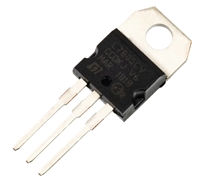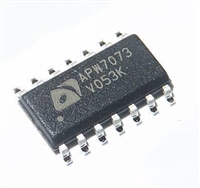| 是否无铅: | 不含铅 | 是否Rohs认证: | 符合 |
| 生命周期: | Active | 零件包装代码: | TSSOP |
| 包装说明: | TSSOP, | 针数: | 8 |
| Reach Compliance Code: | unknown | 风险等级: | 5.68 |
| Is Samacsys: | N | 最大模拟输入电压: | 3.6 V |
| 最小模拟输入电压: | 最长转换时间: | 0.291 µs | |
| 转换器类型: | ADC, SUCCESSIVE APPROXIMATION | JESD-30 代码: | S-PDSO-G8 |
| JESD-609代码: | e3 | 长度: | 3 mm |
| 最大线性误差 (EL): | 0.3906% | 湿度敏感等级: | 1 |
| 模拟输入通道数量: | 1 | 位数: | 8 |
| 功能数量: | 1 | 端子数量: | 8 |
| 最高工作温度: | 125 °C | 最低工作温度: | -40 °C |
| 输出位码: | BINARY | 输出格式: | SERIAL |
| 封装主体材料: | PLASTIC/EPOXY | 封装代码: | TSSOP |
| 封装形状: | SQUARE | 封装形式: | SMALL OUTLINE, THIN PROFILE, SHRINK PITCH |
| 峰值回流温度(摄氏度): | 260 | 采样速率: | 3 MHz |
| 采样并保持/跟踪并保持: | TRACK | 座面最大高度: | 1.1 mm |
| 标称供电电压: | 3 V | 表面贴装: | YES |
| 温度等级: | AUTOMOTIVE | 端子面层: | MATTE TIN |
| 端子形式: | GULL WING | 端子节距: | 0.65 mm |
| 端子位置: | DUAL | 处于峰值回流温度下的最长时间: | 40 |
| 宽度: | 3 mm | Base Number Matches: | 1 |
| 型号 | 品牌 | 获取价格 | 描述 | 数据表 |
| AD7278BRMZ | ADI |
获取价格 |
3 MSPS, 12-/10-/8-Bit ADCs in 6-Lead TSOT |

|
| AD7278BRMZ-REEL | ADI |
获取价格 |
3 MSPS, 12-/10-/8-Bit ADCs in 6-Lead TSOT |

|
| AD7278BUJ-REEL | ADI |
获取价格 |
3MSPS,12-/10-/8-Bit ADCs in 6-Lead TSOT |

|
| AD7278BUJZ-500RL7 | ADI |
获取价格 |
3 MSPS, 12-/10-/8-Bit ADCs in 6-Lead TSOT |

|
| AD7278BUJZ-REEL7 | ADI |
获取价格 |
3 MSPS, 12-/10-/8-Bit ADCs in 6-Lead TSOT |

|
| AD7280 | ADI |
获取价格 |
Lithium Ion Battery Monitoring System |

|
| AD7280A | ADI |
获取价格 |
Lithium Ion Battery Monitoring System Cell balancing interface |

|
| AD7280ABSTZ | ADI |
获取价格 |
Lithium Ion Battery Monitoring System Cell balancing interface |

|
| AD7280ABSTZ-RL | ADI |
获取价格 |
Lithium Ion Battery Monitoring System Cell balancing interface |

|
| AD7280AWBSTZ | ADI |
获取价格 |
Lithium Ion Battery Monitoring System Cell balancing interface |

|
 深入解读IR2103资料手册:引脚说明、电气参数及替换型号推荐
深入解读IR2103资料手册:引脚说明、电气参数及替换型号推荐

 L7805CV手册解读:引脚说明、替代型号推荐、好坏检测
L7805CV手册解读:引脚说明、替代型号推荐、好坏检测

 MMBT5551资料手册解读:电气参数、替换型号推荐
MMBT5551资料手册解读:电气参数、替换型号推荐

 APW7073资料手册解读:产品特性、引脚说明、替换型号推荐
APW7073资料手册解读:产品特性、引脚说明、替换型号推荐
